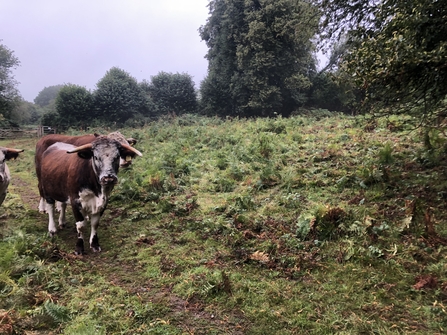
Joe Ryder
Bracken encroachment onto species rich grassland is a constant battle through the summer months on many of the GWT reserves and reducing its ferocity and smothering capability can be a never-ending time-consuming task through the summer period! For this reason, GWT have been trialling a more natural approach using conservation grazing with cattle and ponies for a six week period from the end of June.



